Knight Blog
It was a perfect evening up on the third floor of the Pérez Art Museum Miami on April 29, where the closing reception was held for the artists and curators participating in the second part of the ground-breaking Dialogues in Cuban Art, funded by Knight and The Related Group.
A gentle breeze kept the outdoor patio cool, and the panoramic views of the bay and the city under a cloudless sky were spectacular. It was something many of the visiting artists from Cuba commented upon, when talking about their experiences here in Miami during an interactive week that clearly profoundly moved those from both sides of the Florida Straits.
It all started a year ago, when founder and director Elizabeth Cerejido took a group of Cuban-American artists–who had never visited Cuba before–to the island. That week-long trip during the Havana Biennial, when they toured studios and museums, turned out to be more emotional than many of them expected, according to the artists.
Local artist Cesar Trasobares leads a tour of the Carlos Alfonzo exhibit at PAMM; director Elizabeth Cerejido is in the forefront.
This year, it was the Cuban artists’ turn. They too embarked on a whirlwind tour of studios, collectors, galleries and museums, culminating in a big, two-day symposium at PAMM. Unlike the American contingent, some of these artists had previously visited both the United States and Miami, and many had worked in other countries. And yet, they too seemed unexpectedly touched by the intimate week. Although relations between the two countries have relaxed remarkably since President Obama announced a change in policy in December 2014, there remains a real tension between people who have been so dramatically divided over decades.
This is what Cerejido wanted to directly address, and from the beginning, it’s been one big experiment–and surprise, she said.
At a welcoming event this year, some of the Cuban-American artists on the inaugural trip recalled how anxious and tense they had been to travel to a place so disparaged by family members. For instance, Ruben Millares said he almost couldn’t handle the emotions on that first foray, and is looking forward to returning to Cuba, maybe with a calmer eye. Now, the Cuban artists would take the journey.
According to Cerejido, “I was amazed that they suspended all doubts, they got on the bus and went with the flow all the way.”
Rubén Torres Llorca and Lázaro Saavedra pose with an old photograph of them in Cuba.
These artists, of different generations, stopped in to see the work of exiles they knew well but had never seen in person, such as José Bedia and Maria Martinez-Cañas. Artist and former director of Miami-Dade’s Art in Public Places Cesar Trasobares introduced them to public art, including the powerful piece on a Ceiba tree in Little Havana from Ana Mendieta, and guided them through the work of another giant in contemporary Cuban art, Carlos Alfonzo, at PAMM.
“They also really responded to Pablo Cano,” said Cerejido, about the unique artistic expression of the artist best known for his marionettes made from found objects. “He lives right under the flight path, and the opera that was playing in his little theater [in his house/studio] kept getting drowned out–it was so authentic!” She said the Cuban artists were impressed with his quirky and original art, how he works with his hands all by himself in a small house in Little Havana.
At one stop, two members of what is referred to as the seminal 80s Generation were reunited at the studio of Rubén Torres Llorca: He left Cuba in 1990, while Lázaro Saavedra, who is considered one of Cuba’s most important conceptual artists, stayed.
“Across generations, from both Miami and Cuba, they opened their hearts and really got to know each other,” said Cerejido. “People came up to me and told me, ‘This is a game changer.’”
Dialogues Part II ended with two full days of panel talks, where the general public could participate–and they did. Each panel attracted a different audience, to hear artists, gallerists and curators from Cuba and the U.S. They talked about education, about race, about political and economic realities in their respective homes. Some local attendees, who are still skeptical about ever stepping foot in Cuba until the Castros are gone, nonetheless thought a bridge had been built. Conversely, Cubans–like many others across the globe–were amazed at how much Miami had to offer culturally, that it wasn’t the superficial backwater they had been led to believe all their lives.
On the third floor patio when it was all over, Cuban artist Inti Hernandez said he could not have been more impressed, and moved. The visit to the studio of Martinez-Cañas, who left the island in the early 1960s as a toddler, left a special mark, he said. Now living most of the time in Amsterdam, Hernandez, who had never been to Miami, said he was astounded at how Cuban Martinez-Cañas still was. “She left when she was a tiny child, but she is still like my tía[aunt]!” The divide between the two cultures, he said, was not nearly as big as he thought–and is in fact still a close family.
Cerejido said this project is too important now to let it slide. She has proposed a next step for exhibitions held on both sides of the straits, co-curated by people from Havana and Miami.









